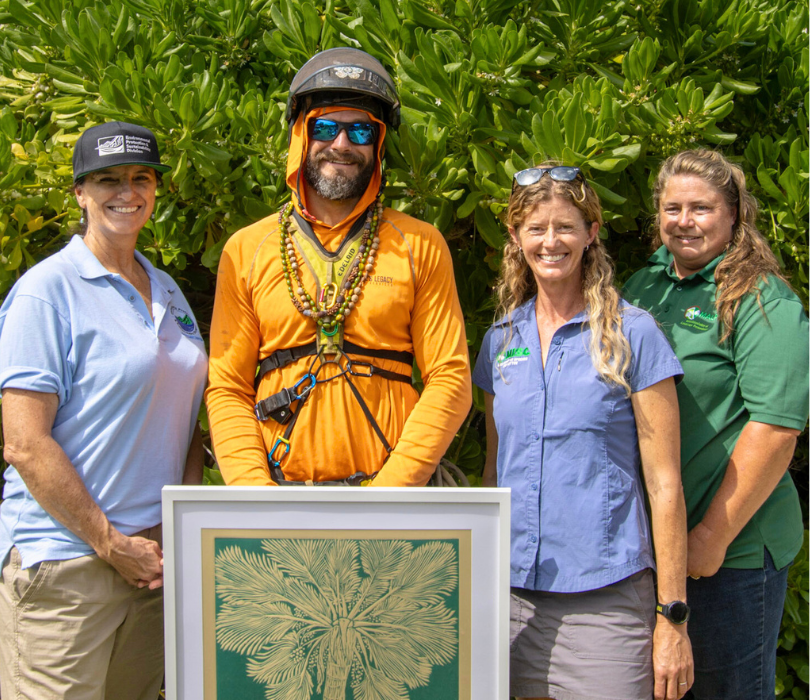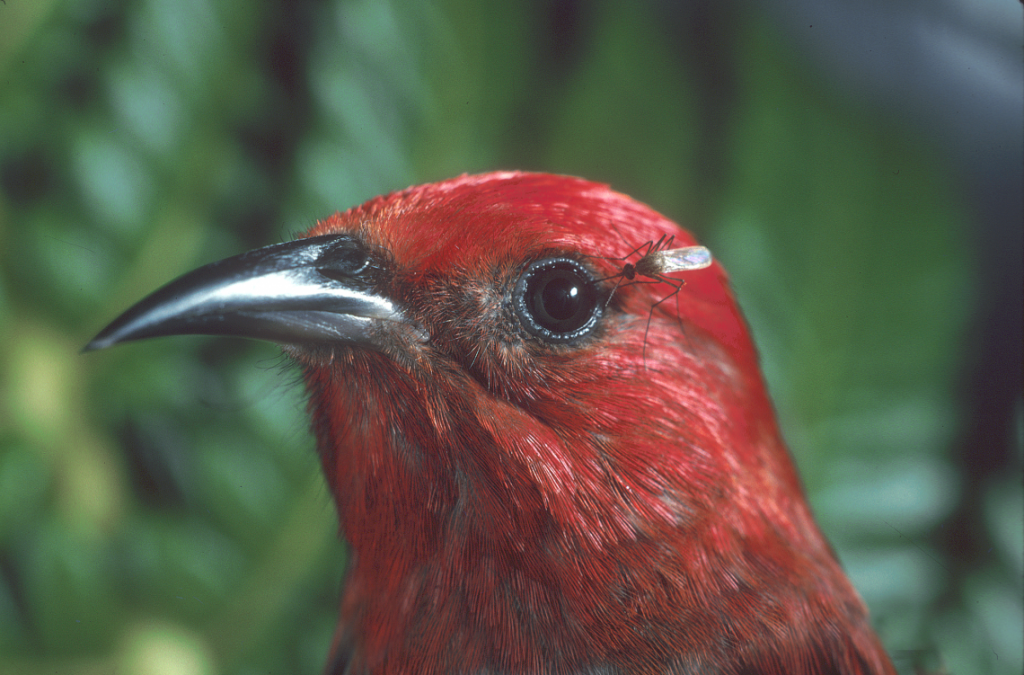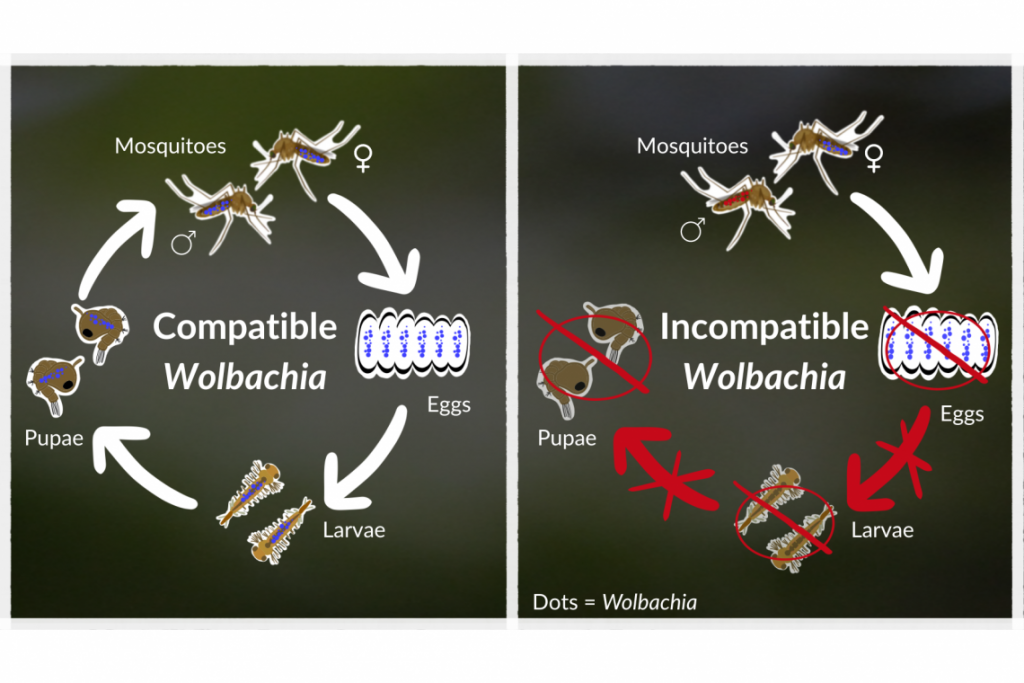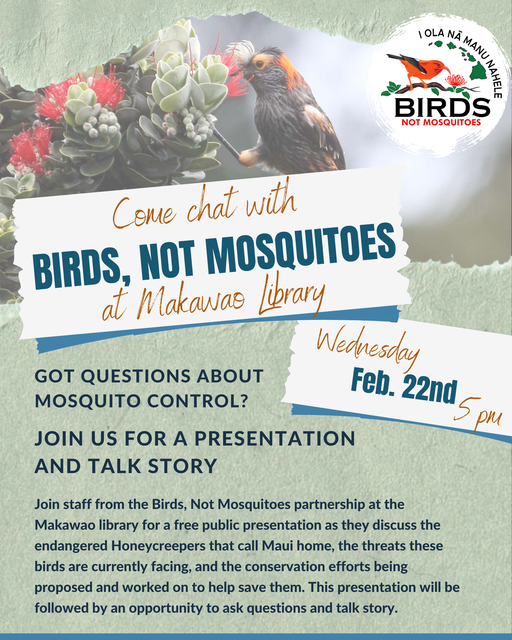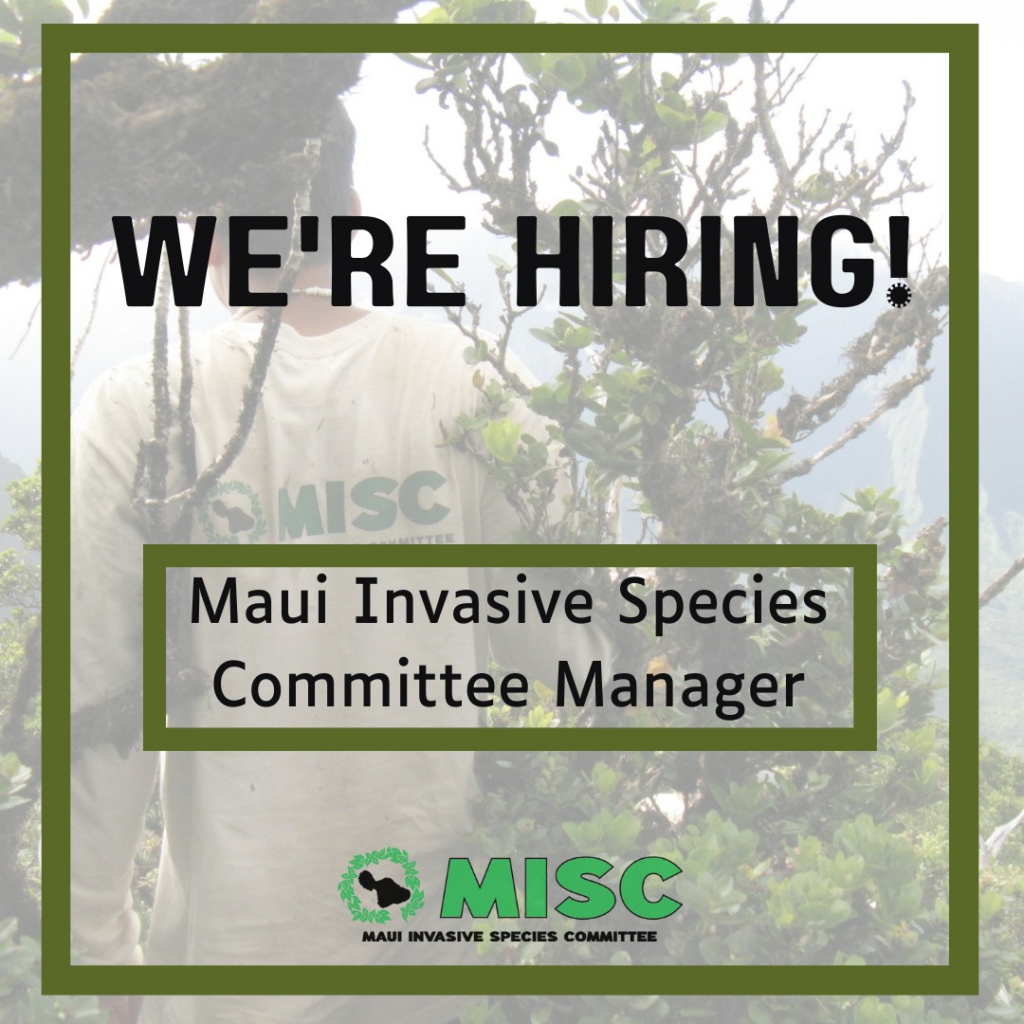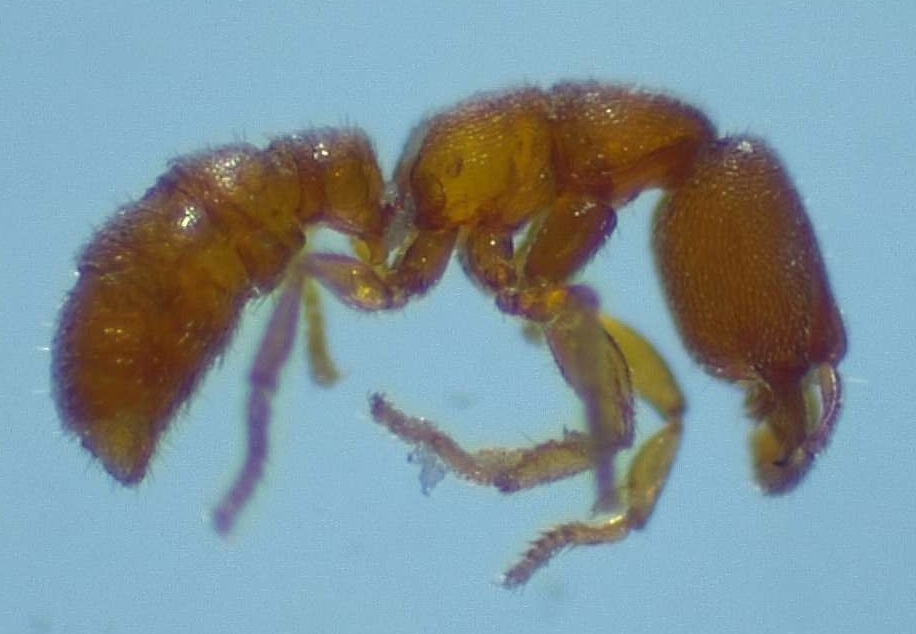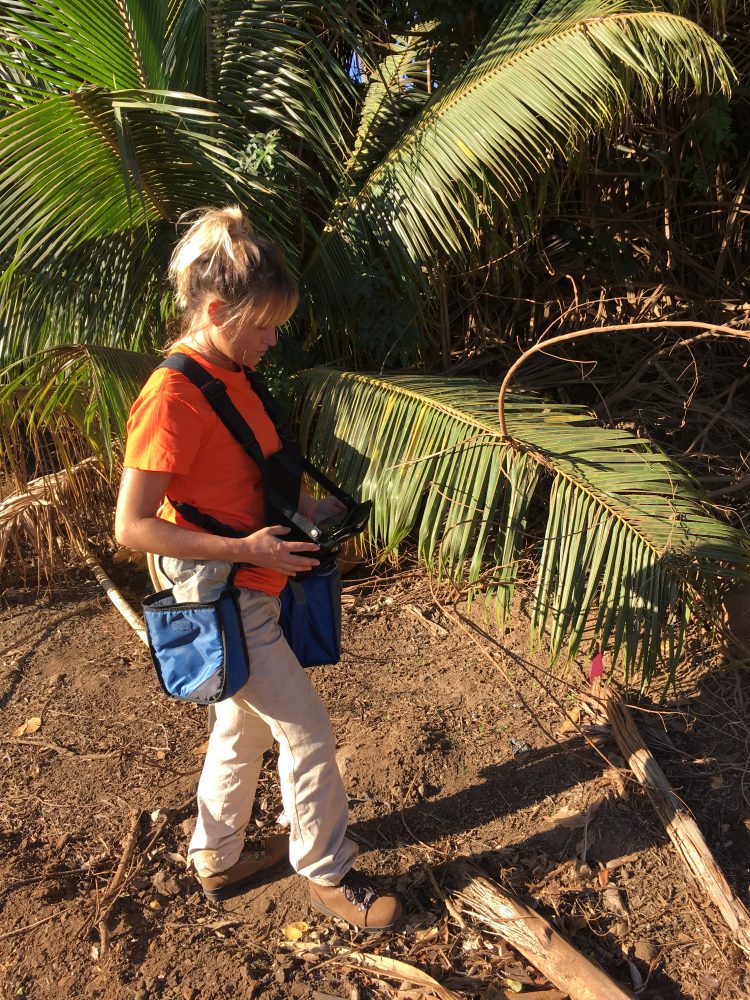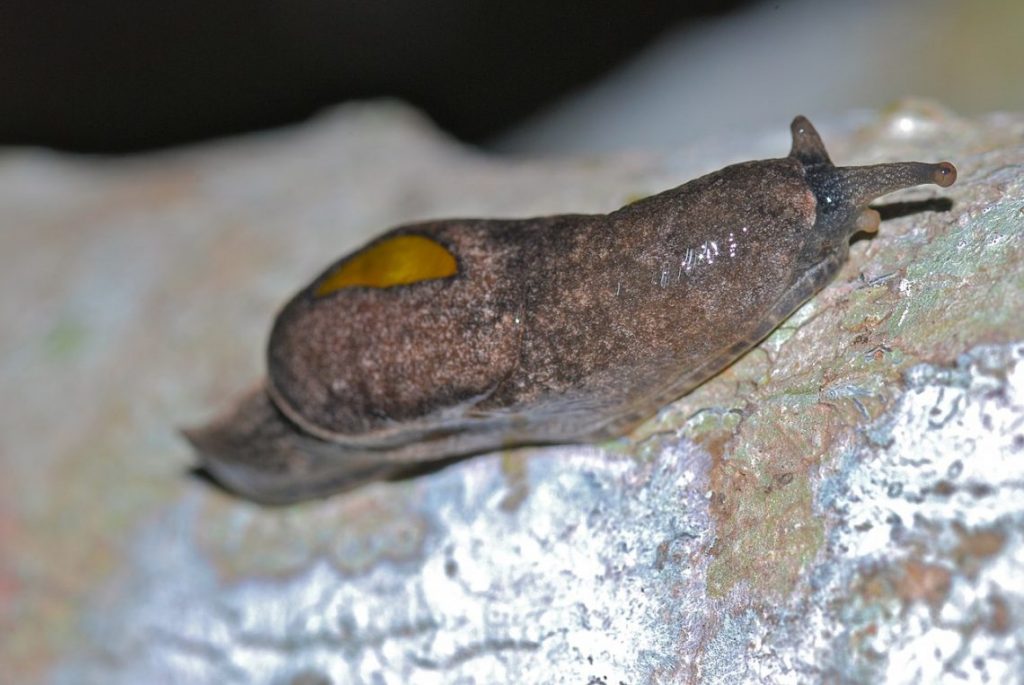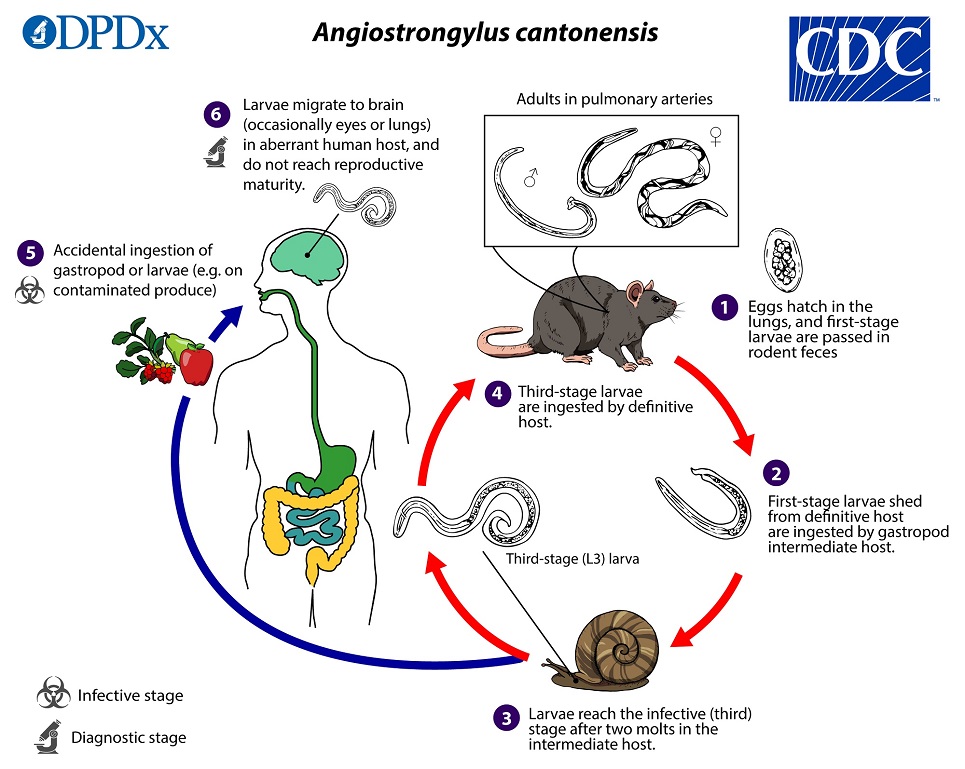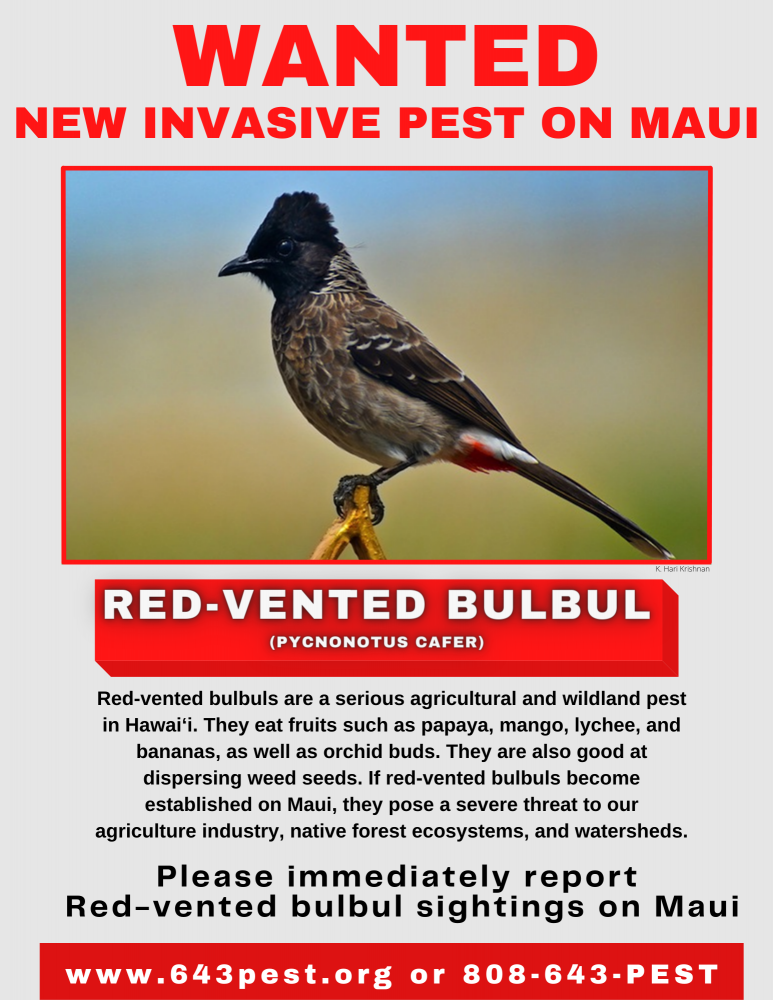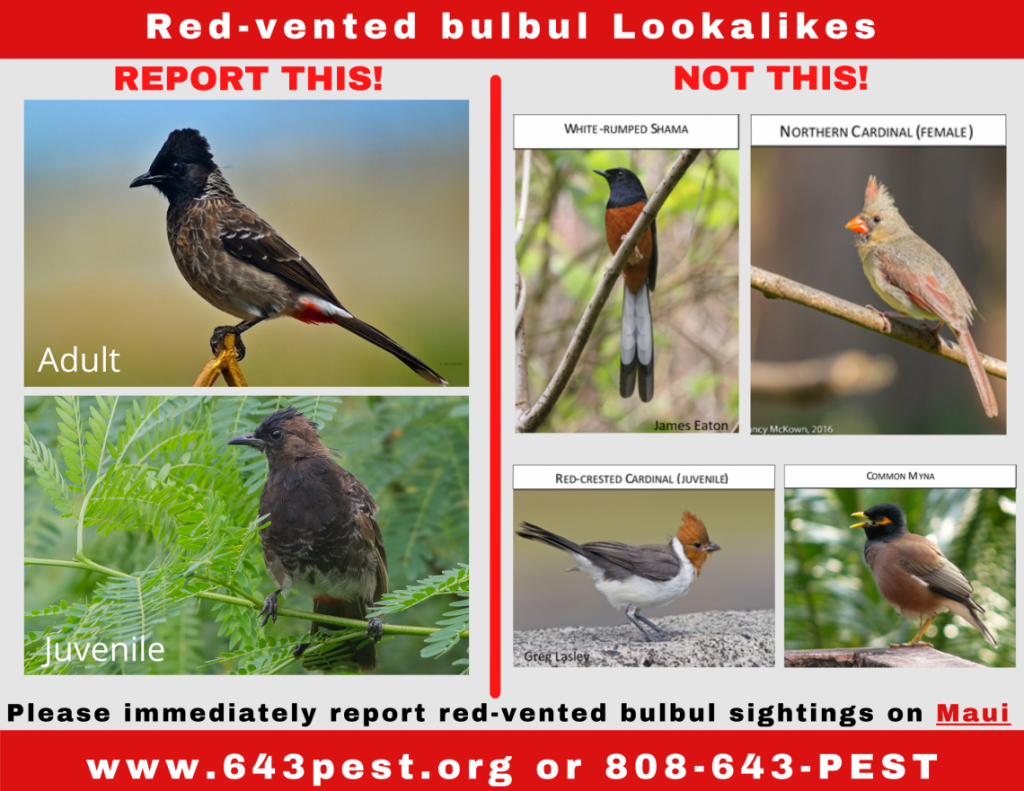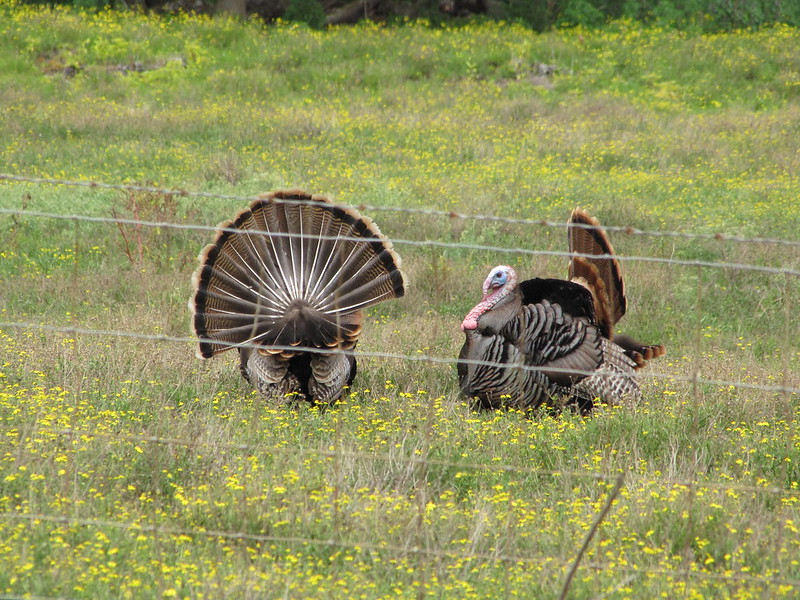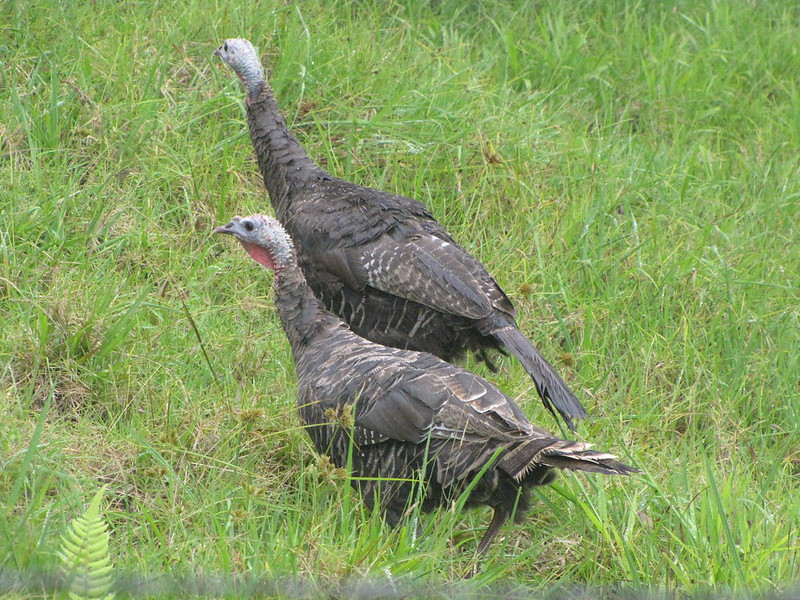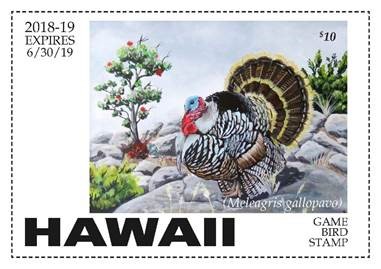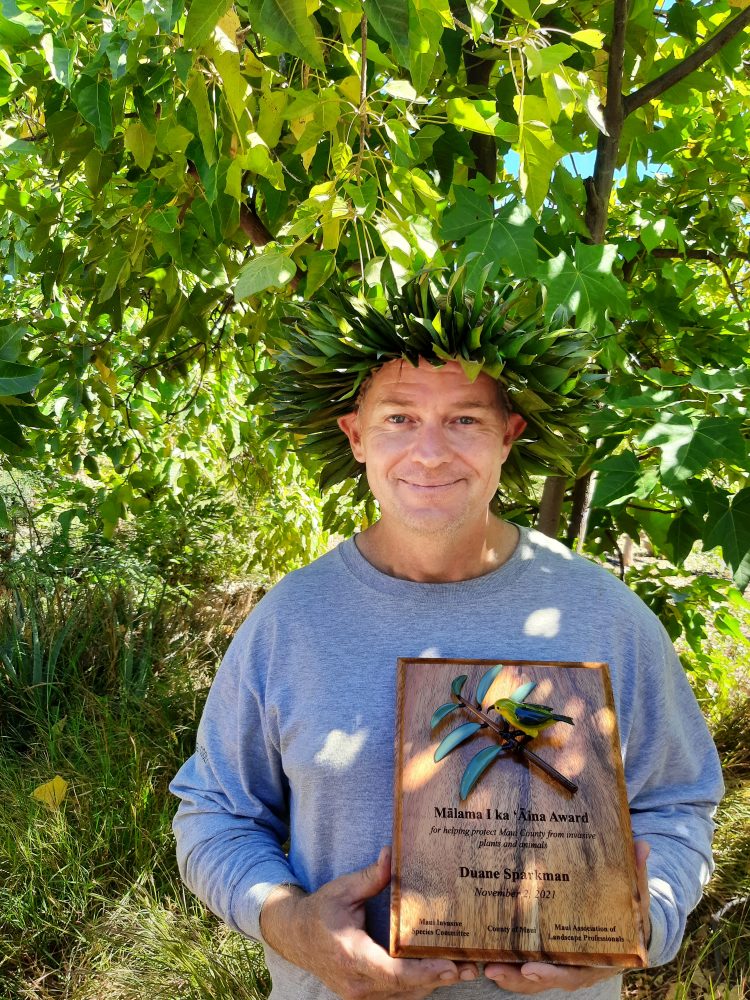Jake Kane of Kane’s Legacy Tree Services was the recipient of the 2024 Mālama i ka ‘Āina Award, presented at the Arbor Day Expo at the Maui Nui Botanical Garden on November 2, 2024. Now in its 22nd year, the Mālama i ka ‘Āina Award is given annually to recognize individuals in the landscape and agricultural community working to stop the spread of invasive species. The award is presented by the Maui Invasive Species Committee, the Maui Association of Landscape Professionals, and the County of Maui.

Kane is widely recognized in Maui’s landscape community for his professionalism and commitment to environmental health. His work promotes a balanced approach to vegetation management – underscoring the importance of removing invasive trees while maintaining a healthy tree cover. Kane’s methods promote safety, environmental health, and climate resilience in Maui County, and have significantly influenced local land use strategies. Beyond his business, Kane is actively involved in community outreach, sharing information on tree management for safety and fire prevention.
Last summer, during the August 8 wildfires, Kane lost his entire inventory of vehicles and equipment. Despite these setbacks, he was among the first arborists to return to Lāhainā’s burn zone to assess hazardous trees and educate the public on managing – rather than removing – fire-affected trees. Kane’s expertise post-wildfire proved essential to ongoing recovery efforts, underscoring his commitment to Maui’s resilience.
More recently, Kane and his team assisted the County of Maui in a massive clean-up effort near Ukumehame, where a former wetland area was covered in invasive species and littered with trash and derelict cars. Kane and his team felled acres of invasive trees, leaving culturally significant canoe and native trees. The County’s Environmental Management team later praised his professionalism and collaboration, calling Kane and his team the “most professional” they had ever worked with.
Kane’s legacy of collaboration extends over a decade. In 2012, he was instrumental in assisting with a West Maui little fire ant infestation, helping the Maui Invasive Species Committee tackle the challenge of ant nests in the tops of coconut palms. His collaborative problem solving allowed local teams to treat infestations independently. Kane has also been proactive in taking preventative measures against emerging threats like the coconut rhinoceros beetle. His motivated approach to conservation embodies the spirit of mālama ‘āina.
This year’s award is a linocut print of a native loulu palm by Maui artist Jennifer Thackray. The original piece was featured in the 2024 Mālama Wao Akua exhibit at the Hui No’eau Visual Arts Center.
The 2024 Malama i ka ‘Aina Award acknowledges Jake Kane’s invaluable role in promoting environmental stewardship and community resilience on Maui, setting a powerful example for sustainable land management in Hawai‘i.
